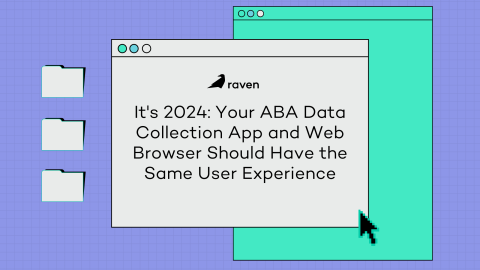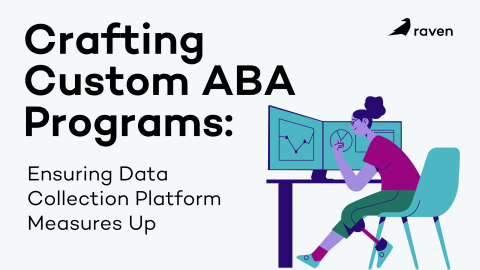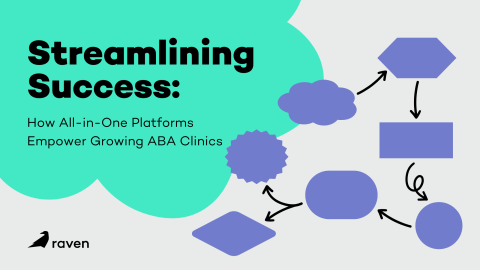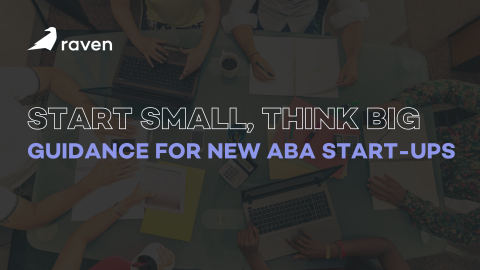
Applied behavior analysis (ABA) is a data-driven science. Data collection and analysis are at the heart of what ABA practitioners do. Each learner has unique behaviors and environmental variables that can impact data collection needs. There is no one-size-fits-all approach in ABA. In this blog, we will dive into the intricacies of the various ABA data methods.
What is Data Collection in ABA?
ABA data collection is a systematic process of gathering information about a learner’s behavior, their environment, and the circumstances surrounding their behavior. This data is crucial for behavior analysts to understand the learner’s behaviors and current skills, inform interventions that best meet the learner’s unique needs, and monitor progress to ensure ongoing success.
Types of ABA Data Collection Methods
There are several different data collection methods in the ABA industry. Each method has its’ own benefits depending on the goal, learner needs, environmental factors and barriers, and the resources available to the behavior analyst.
Methods for collecting quantifiable behavior data are divided into two categories: continuous and discontinuous. Continuous data consists of measures like latency, count, rate, interesponse time, and duration. These methods involve tracking each occurrence of the target behavior. Conversely, discontinuous data consists of measures such as whole and partial interval recording and time sampling. Discontinuous data involves recording some, but not all, occurrences of a target behavior. Continuous measurement is more accurate and concise. However, discontinuous measurement is often better when time constraints and other environmental barriers are at play.
Overview of the Most Common ABA Data Collection Methods
1. Latency Recording
Latency is a measurement of the time between the presentation of a stimulus (e.g., a demand) and the onset of the behavior. For example, if you instruct your student to go get their backpack and they get up two minutes later to get it, the latency is two minutes. Latency recording is beneficial for monitoring delayed responses.
2. Event Recording (Count and Rate)
Event recording is one of the most common data collection methods in ABA for tracking target behaviors and skills. Event recording measures the number of times a particular behavior occurs. The count is an overall tally of the behavior. For example, recording your client manded (requested) 12 times. The rate measures the number of times the behavior occurs across a specified period of time. For example, if your client mands 12 times in a 2-hour session, the rate would be 6x/hour.
3. Duration Recording
Duration recording is your best option when you’re interested in knowing how long a particular behavior lasts. Duration involves recording the total time from the start of a behavior until the behavior ceases. Recording duration is best for behaviors that have a discrete beginning and ending.
4. Interresponse Time
Interresponse time consists of recording the amount of time from the end of one response to the beginning of the next. For example, if your client spits, then 14 minutes later, they spit again, then the interresponse time between the two occurrences of spitting was 14 minutes.
5. Whole Interval Recording
Whole interval recording is a discontinuous measurement procedure. In this method, the observation period is divided into intervals of time. During each interval, if the client engages in the target behavior for the full duration, the interval is marked with a +, ✓, or yes. If the client does not engage in the target behavior for the entire interval, it is marked as a -, X, or no.
6. Partial Interval Recording
Partial interval recording is another discontinuous measurement procedure. Again, start by breaking the observation into intervals. Record a +, ✓, or yes for each interval that the client engaged in the target behavior at all during the interval.
7. Time Sampling
Another discontinuous measurement procedure is time sampling or momentary time sampling. In this method, the session is divided into intervals. At the end of each interval, the observer records whether or not the behavior is occurring at that time. Partial and whole interval recording and time sampling are often used in schools and other situations when continuously observing and recording each occurrence of a target behavior is not feasible.
8. Trial-By-Trial/Per Opportunity Recording
Trial-by-trial or per-opportunity recording is commonly used for skill acquisition data. This method consists of recording the total number of times the learner engaged in the target behavior or demonstrated the target skill out of the total number of opportunities. For example, imagine you’re teaching your client to respond to the question, “What’s your name?” You ask them this question five times throughout the session. Two of the times you target this skill, they answer correctly. Thus, the per opportunity data would be 2/5 or 40% accuracy.
9. Rating Scale Data
Rating scales are used to assess and monitor behavior on a continuum. This type of data measurement is more subjective than the others. However, they can be beneficial in certain circumstances. Rating scales can be used when teaching a learner to self-monitor and evaluate their own behavior. Rating scales can also be used to assess the magnitude or intensity of a behavior, such as the intensity of aggression or the magnitude of a learner’s voice volume.
10. Antecedent-Behavior-Consequence (ABC) Data
ABC data comprises recording the antecedent (the event that occurred directly before the behavior), the target behavior, and the consequence (the event that occurred directly after the behavior). ABC data is crucial for behavior analysts to better understand the variables surrounding their learner’s behavior. By analyzing ABC data, behavior analysts can identify the potential function(s) of the behavior by looking at trends in the antecedents and consequences.
11. Scatterplot Analysis
A scatterplot analysis is another method for analyzing target behaviors. Scatterplot data helps behavior analysts visualize the relationship between different variables, such as the time of day and the target behavior. This is beneficial for identifying patterns in the learner’s behavior.
Raven Health’s ABA software makes data collection seamless for behavior technicians and behavior analysts. With a user-friendly interface, ABA professionals can utilize a wide range of data collection methods that address the unique needs of the learner. Book a demo to learn more about the data tracking and analysis tools available with Raven Health.
Choosing the Best ABA Data Collection Method
The method of ABA data collection you use depends on many factors. Consider the following questions when determining the best method to use.
- Are you tracking behaviors targeted for reduction or skill acquisition?
- Are you seeking to identify variables related to the target behavior or quantifiable data, such as how often the behavior occurs?
- Can you count the number of times the behavior occurs or how long the behavior occurs?
- Are there barriers or time constraints to data recording?
- Which data method would best support the learner in meeting their individualized goals?
- Which method allows the ABA professional to maximize time spent with the learner?
Raven Health’s Mission to Equip the ABA Industry
Raven Health enables behavior analysts to harness the power of data collection effectively. With innovative software tailored for ABA, clinicians can improve client outcomes while improving staff satisfaction.
Schedule a demo today to see our platform in action and learn more about how we’re improving care through technology.
ReferencesCooper, J. O., Heron, T. E., & Heward, W. L. (2019). Applied Behavior Analysis (3rd Edition). Hoboken, NJ: Pearson Education.







